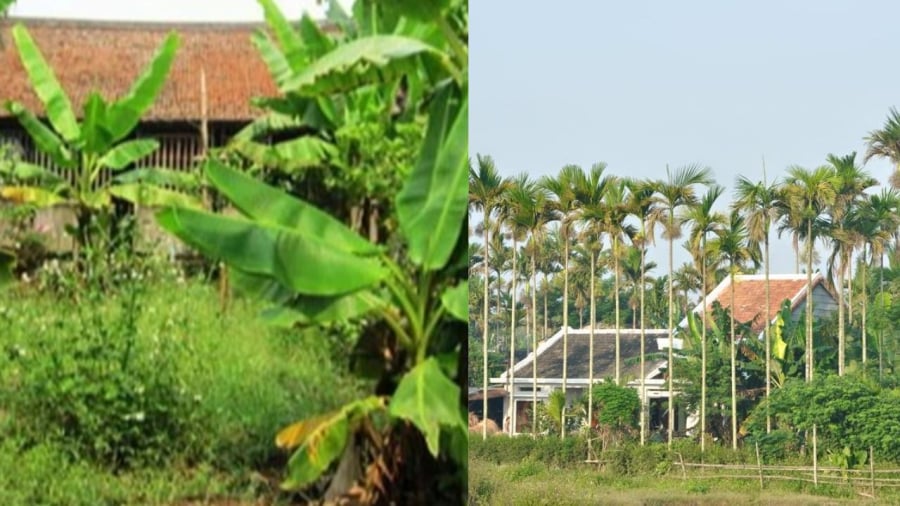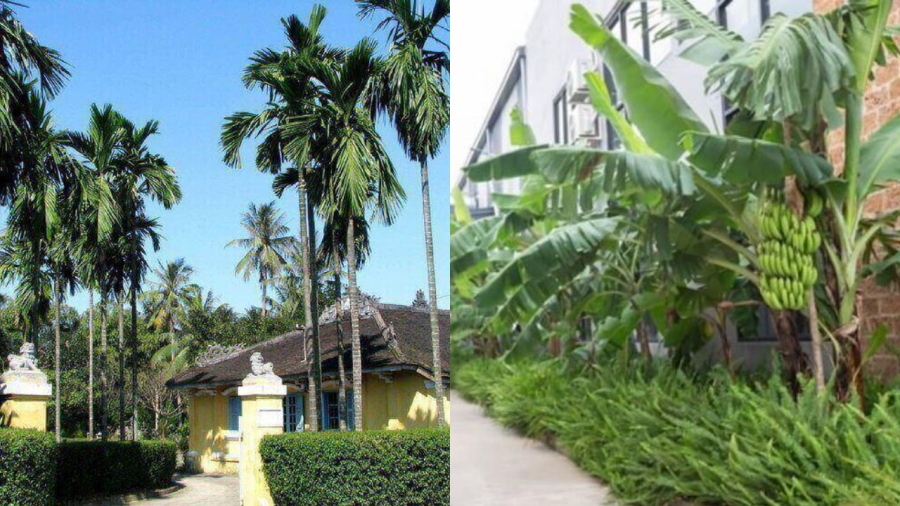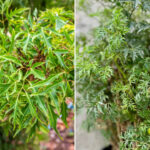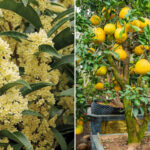In the past, people relied heavily on nature for their way of life. During those times, life was mostly agrarian, and people’s existence was deeply intertwined with the natural world. Traditional Vietnamese homes favored a south-facing orientation, and the practice of planting banana trees behind areca nut trees aligned with this preference.
What is the significance of planting banana trees behind areca nut trees?
Having a row of areca nut trees in front of a house and banana trees at the back is more than just a gardening preference; it carries cultural and practical significance. Both trees bear fruits that are commonly used in daily life and religious ceremonies. Areca nuts were chewed as a stimulant and offered during ancestral worship, while banana trees provided fruits, flowers, and leaves that served multiple purposes.

The Aesthetics and Meaning of Banana and Areca Nut Trees
Beyond their practical uses, these trees held symbolic value. Areca nut trees, with their tall, slender trunks and high-reaching leaves, can grow up to several meters in height and require ample sunlight. Planting them in front of a south-facing house allows them to absorb the intense western sunlight while filtering out the heat. This positioning also ensures they receive the gentle morning sun from the east without any obstructions, creating a natural cooling system for the house.
From a feng shui and aesthetic perspective, the height of the areca nut trees adds a sense of openness and brightness to the front of the house, attracting positive energy and wealth. The row of trees serves as a symbolic honor guard, protecting the home and its inhabitants. Additionally, the trees’ leaves rarely fall, keeping the area tidy, and their flowers emit a pleasant fragrance that purifies the air and wards off negative energies.
Banana trees, with their distinctive large trunks and long, drooping leaves, create a natural windbreak. Planting them at the back of the house shields it from cold winds blowing from the north and northeast, helping to keep the home warm. According to feng shui principles, the trees’ ability to slow down the escape of indoor air prevents the loss of wealth and prosperity for the household. Banana trees also readily release latex when bitten by insects, and their roots tend to rot after each harvest, making them less ideal for planting in the front of the house as they can produce an unpleasant odor.
Thus, the combination of planting areca nut trees in front and banana trees at the back strikes a balance between aesthetics and feng shui considerations. While it is possible to plant areca nut trees at the back, they may not provide the same level of wind protection as banana trees. Conversely, planting banana trees in front is not recommended due to their potential to create a dark and stuffy living space and their propensity to emit an unpleasant odor when the roots rot.

The Feng Shui Significance of Properly Placed Banana and Areca Nut Trees
Is this practice still applicable today?
With the advent of modern architecture and diverse house orientations, the tradition of planting banana and areca nut trees may seem less relevant. However, many families with ground-floor homes continue to embrace this practice, either out of nostalgia or a desire to maintain traditional aesthetics. While most people prefer planting areca nut trees for decorative purposes, some also opt for ornamental varieties of both trees.
If you choose to plant ornamental areca nut trees (shorter trees with spreading leaves) or ornamental banana trees, you can place them both in front of your house. Ornamental banana trees have a smaller stature, delicate leaves, and vibrant red flowers that symbolize joy and good fortune.
However, from an aesthetic and practical standpoint, planting fruit-bearing banana trees in front of the house is still not recommended due to their large, drooping leaves, which can make the space appear cramped and hinder airflow.
For those living in apartments or condominiums with limited balcony space, consider growing dwarf varieties of both trees in pots or containers. Ensure you place them in a sunny spot on your balcony to promote their growth.
This information is for reference and contemplative purposes only.



































